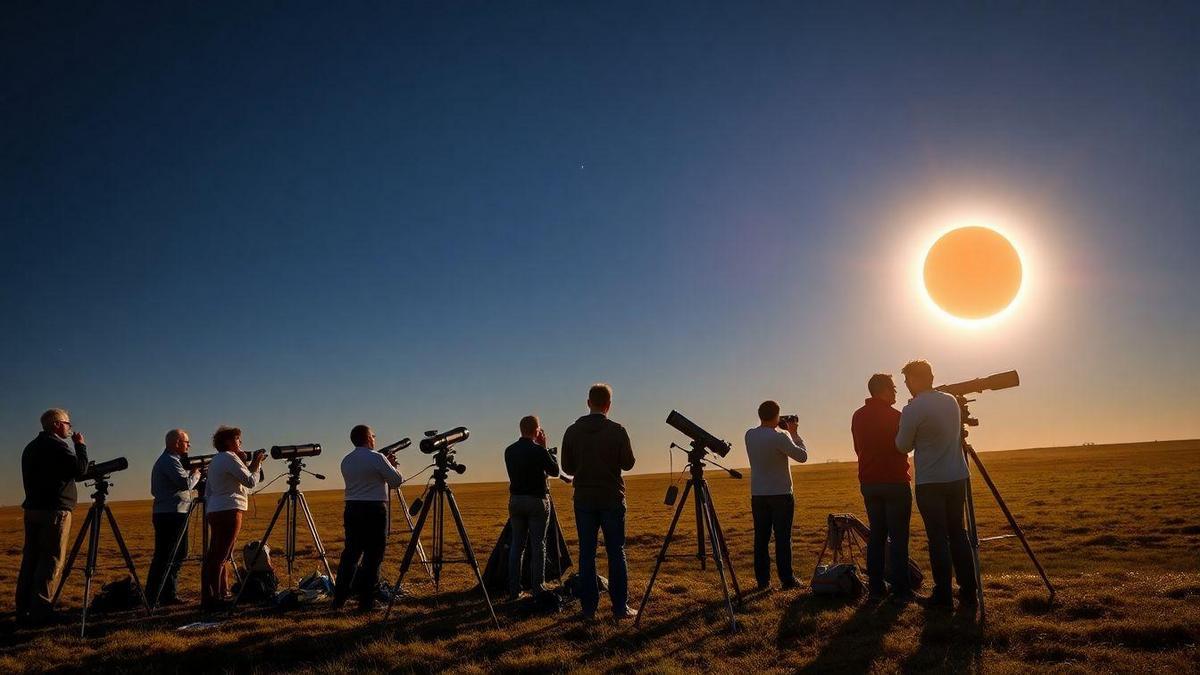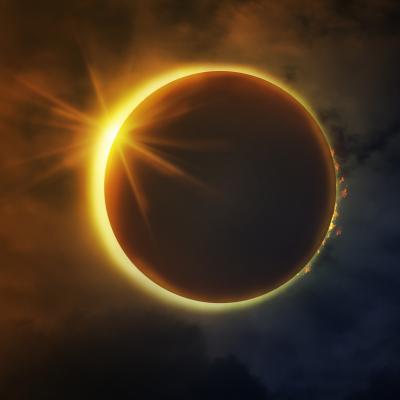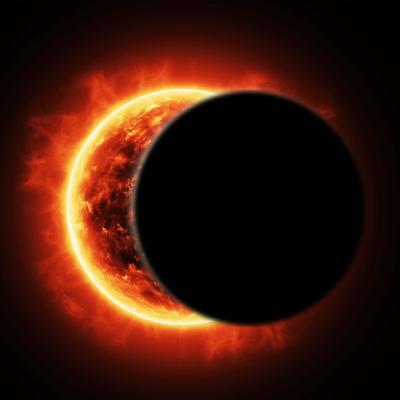The validation of Albert Einstein’s general theory of relativity through solar eclipses represents a significant milestone in the history of physics and astronomy. During a total solar eclipse, when the Moon blocks the Sun’s light, scientists can observe phenomena that would otherwise be invisible. This opportunity allows testing fundamental predictions of the theory, such as the deflection of light from stars, caused by the curvature of space-time.
Since the famous experiment by Sir Arthur Eddington in 1919, solar eclipses have been used to validate general relativity and its implications. This approach not only confirmed Einstein’s predictions but also opened new avenues for the exploration of gravity and the behavior of light in the presence of massive objects. With each event, scientists continue to expand our understanding of the universe and relativity.

The Role of Solar Eclipses in Validating General Relativity
Solar eclipses are a crucial tool for validating the theory of general relativity. During a total eclipse, the Moon blocks sunlight, allowing the observation of the solar corona and stars near the Sun. This is essential for testing the deflection of light, one of the most notable predictions of Einstein’s theory.
General relativity suggests that the light from stars will be deflected when passing near a massive object, like the Sun. This phenomenon, known as gravitational light deflection, can be measured during a solar eclipse when stars become visible. The observed deflection provides direct confirmation of space-time curvature.
The first major test of this phenomenon occurred during the 1919 solar eclipse when astronomer Sir Arthur Eddington measured the position of stars. He found a deflection in the direction predicted by Einstein’s theory, confirming the curvature of light and validating the theory of general relativity. Since then, solar eclipses have been used to confirm and refine these results.
With advances in observation technologies, scientists are increasingly able to observe more subtle details during solar eclipses. This allows for more precise study of the behavior of light and stars, expanding the empirical evidence supporting Einstein’s theory.
Advantages of Solar Eclipses for Scientific Validation
Solar eclipses offer unique advantages for the validation of general relativity. First, they provide ideal conditions for astronomical observations since direct sunlight is blocked. This allows phenomena such as the solar corona and stellar light deflection to be observed clearly.
Additionally, solar eclipses are predictable events, which allows scientists to plan experiments and observations in advance. This predictability facilitates equipment preparation and coordination of research teams. With anticipation, it is possible to ensure maximum precision in the collected data.
Another positive aspect is the international collaboration facilitated by solar eclipses. As the eclipse shadow travels across different regions of Earth, scientists from various parts of the world can join forces to study the event. This collaboration results in a more comprehensive data collection and stronger conclusions.
Finally, solar eclipses are events that capture public interest and promote scientific education. They provide an opportunity to explain science in an accessible way, stimulating interest in physics and astronomy. This also contributes to continued support for scientific research.
How to Plan Validation Experiments During Solar Eclipses

Conducting experiments during solar eclipses requires meticulous planning. First, it is essential to choose strategic observation locations. The path of the eclipse needs to be analyzed to ensure that scientific instruments will be optimally positioned to record accurate data.
The preparation of instruments is a crucial step. Before the eclipse, all equipment, such as telescopes and cameras, must be calibrated and tested. The precision of the instruments is fundamental to ensure that the measurements of light deflection are reliable and validate Einstein’s predictions.
Collaboration between international teams is key to expanding the scope of the experiments. Scientists from different countries can observe the eclipse from distinct locations, allowing for data collection under different conditions and increasing the accuracy of the measurements. This knowledge exchange also contributes to refining observation methods.
After the event, data analysis is the next step. Comparing the positions of stars observed during the eclipse with their positions at other times of the year reveals whether the light was deflected as expected. Careful interpretation of the data is crucial for validating the theory of general relativity.
How Solar Eclipses Work in Validating General Relativity
Solar eclipses play a crucial role in validating Albert Einstein’s general theory of relativity. During a total solar eclipse, the Moon passes between Earth and the Sun, completely blocking sunlight and casting a shadow on the Earth’s surface. This celestial event offers a unique opportunity for scientists to observe phenomena that are not visible under normal conditions. During a total eclipse, the solar corona, which is the Sun’s outer atmosphere, becomes visible, allowing astronomers to make detailed observations.
The theory of general relativity, proposed by Einstein in 1915, predicts that gravity is a curvature of space-time caused by the presence of mass. One of the most notable predictions of this theory is the phenomenon known as light deflection, where the light from stars passing near a massive object, such as the Sun, will be deflected due to space-time curvature. Solar eclipses offer a unique opportunity to observe this light deflection, as stars near the Sun become visible during the eclipse.
In 1919, a famous experiment conducted by Sir Arthur Eddington during a total solar eclipse provided one of the first experimental confirmations of the theory of general relativity. Eddington measured the apparent position of stars during the eclipse and compared them to their positions at other times of the year. He discovered that the stars’ positions were displaced in the direction predicted by Einstein’s theory, thus confirming the light deflection prediction.
The validation of general relativity through solar eclipses not only confirmed Einstein’s theory but also revolutionized physics and astronomy. This experiment demonstrated that light can be influenced by gravity, challenging the classical Newtonian view of the universe. Since then, solar eclipses have continued to be used to test and refine gravitational theories as technology advances and new observation techniques become available.
Advantages of Using Solar Eclipses to Validate General Relativity
Using solar eclipses to validate general relativity presents several significant advantages. First, solar eclipses provide a unique opportunity to observe celestial phenomena that are not visible under normal conditions. During a total eclipse, the Sun’s light is blocked, allowing the solar corona and stars near the Sun to become visible. This allows scientists to make precise measurements of stellar light deflection, a fundamental prediction of Einstein’s theory.
Another important advantage is that solar eclipses allow experiments to be conducted under controlled conditions. During a total eclipse, the temporary darkness enables scientific instruments to capture data without the interference of direct sunlight. This results in more precise and reliable measurements, essential for testing general relativity. Furthermore, solar eclipses are predictable events, allowing scientists to plan ahead and prepare detailed experiments.
Solar eclipses also provide an opportunity for international collaboration. Due to their rare nature and the fact that the eclipse’s shadow moves across Earth’s surface, scientists from different countries can collaborate to observe the event from various locations. This results in more comprehensive data collection and a more robust validation of the theory of general relativity. This international collaboration also promotes the exchange of knowledge and experiences between scientists from various fields.
Finally, solar eclipses are events that capture the public’s imagination and spark interest in science. The validation of general relativity through solar eclipses is a fascinating example of how science can explain complex phenomena in the universe. This not only strengthens confidence in science but also inspires future generations of scientists to explore and better understand the cosmos. In summary, solar eclipses are a valuable and effective tool for validating the theory of general relativity and advancing our knowledge of the universe.
How to Conduct Validation Experiments of General Relativity During Solar Eclipses

Conducting experiments to validate general relativity during solar eclipses requires careful planning and coordination of several steps. First, it is essential to choose a strategic location to observe the eclipse. The path of the eclipse should be analyzed to identify the best observation sites, ensuring that scientific instruments are positioned optimally to capture accurate data.
Preparation of Instruments:
Before the eclipse, it is crucial to calibrate and test all scientific instruments. This includes telescopes, cameras, and sensors that will be used to measure stellar light deflection. The precision of the instruments is fundamental to ensure the validity of the experimental results.
International Collaboration:
Due to the global nature of solar eclipses, collaborating with scientific teams from different countries is beneficial. This allows for data collection from multiple locations, increasing the accuracy and comprehensiveness of the observations. Collaboration also enables the sharing of resources and knowledge.
Data Analysis:
After the eclipse, the collected data must be thoroughly analyzed. This involves comparing the positions of stars observed during the eclipse with their positions at other times of the year. The analysis must take into account factors such as atmospheric refraction and other potential sources of error.
Publication of Results:
After analyzing the data, it is important to publish the results in respected scientific journals. This allows the scientific community to evaluate and validate the conclusions. Transparency in publishing results is essential for advancing scientific knowledge.
Review and Refinement:
Validation experiments of general relativity should be continuously reviewed and refined. As new technologies and observation techniques become available, experiments can be improved to increase the precision and reliability of the results.
Education and Outreach:
Finally, it is important to share the results and the significance of the experiments with the general public. This can be done through lectures, popular science articles, and educational events. Public awareness of science and its discoveries is crucial for promoting interest and support for scientific research.
Conducting validation experiments of general relativity during solar eclipses is a complex task that requires meticulous planning, collaboration, and rigorous analysis. However, the results of these experiments have the potential to expand our understanding of the universe and confirm one of the most fundamental theories in modern physics. By continuing to explore and validate general relativity through solar eclipses, scientists can deepen our understanding of gravity and space-time.
Frequently Asked Questions
What is the validation of general relativity through solar eclipses?
The validation of general relativity via solar eclipses is the process of confirming Einstein’s theory by observing the curvature of light from stars caused by the Sun during an eclipse.
Why are solar eclipses important for validating general relativity?
During a solar eclipse, the Moon blocks the Sun, allowing observation of nearby stars and confirming whether their light is deflected by the Sun, as predicted by Einstein’s theory.
Who conducted the first general relativity test using a solar eclipse?
British astronomer Sir Arthur Eddington conducted the first significant test during the 1919 solar eclipse, confirming Einstein’s theory.
What discoveries resulted from solar eclipse tests?
Solar eclipse tests helped validate that light can be curved by gravity, supporting the idea that space-time is affected by large masses.
How can I observe a solar eclipse to study general relativity?
Be cautious when observing and use appropriate solar filters. During a total eclipse, attend organized events or use proper equipment for safety and better observation.
